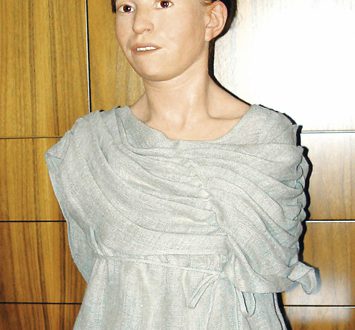 Last week two twin towers were opened in North London. But it wasn’t a revival of the Old Wembley – this was the much awaited opening of the Shri Vallabh Nidhi temple on Ealing Road. Costing a cool £16 million and taking 14 years to build, the temple (or Mandir, in Hindi) did not disappoint – contemporary buildings today simply do not contain the stunning detail that this Indian temple boasts.
Last week two twin towers were opened in North London. But it wasn’t a revival of the Old Wembley – this was the much awaited opening of the Shri Vallabh Nidhi temple on Ealing Road. Costing a cool £16 million and taking 14 years to build, the temple (or Mandir, in Hindi) did not disappoint – contemporary buildings today simply do not contain the stunning detail that this Indian temple boasts.
Stepping outside Alperton tube station and breathing that (unfresh) London air, I distinctly felt I was back in the multicultural environment of my youth. Looking around I saw a Methodist church next to a mosque next to a Baptist church (next to a fast food joint). It’s a slice of life where the kids playing out in the street aren’t carrying alcohol or sizing you up to mug you, and the people will smile at you as you walk past. In a city where people don’t usually acknowledge one another unless they’ve bumped into you, that’s a big thing.
So it’s fitting that in this diverse community, the addition of this distinct cultural icon has been welcomed. The design of the temple is far from keeping in harmony with the surrounding environment, but unlike several of the other Ealing Road Houses of God, you certainly can’t mistake this one for being anything other than a temple. But it’s not just the beautiful details that make this building interesting – it’s the way it’s built.
 Almost all public buildings constructed today have a steel framework, but Hindu temples such as the Shri Vallabh Nidhi temple are built according to Agamas – ancient Sanskrit scriptures which date from 3000BC. The Agama scriptures are also used in Jainism and Buddhism, and famous examples which have been constructed from these writings include Angkor Wat and the Vishnu Temple at Deogarh.
Almost all public buildings constructed today have a steel framework, but Hindu temples such as the Shri Vallabh Nidhi temple are built according to Agamas – ancient Sanskrit scriptures which date from 3000BC. The Agama scriptures are also used in Jainism and Buddhism, and famous examples which have been constructed from these writings include Angkor Wat and the Vishnu Temple at Deogarh.
The component pieces used in the construction of the Ealing Road temple were originally hand carved in the small town of Sola, Gujarat, India where they were packed onto palettes and shipped over to the UK. Skilled stone carvers are flown in from India, who then set about putting pieces together to create the final finished building.
The immense work that goes into carving all these details and shipping them halfway around the world are what contributes to such a high cost and lengthy construction time, but the results are certainly worth it. The exterior of the Mandir boasts carvings of several Hindu deities, and inside (where photography was forbidden) the beautiful ornate stonework continues throughout, accentuating 41 stunningly crafted marble deities, also custom-made for the temple in India.
Although built in the modern age, the complete construction of the Shri Vallabh Nidhi temple conforms to the Agama writings, which surely counts this as being ancient architecture, built using traditional methods dating back 5,000 years but created today.





